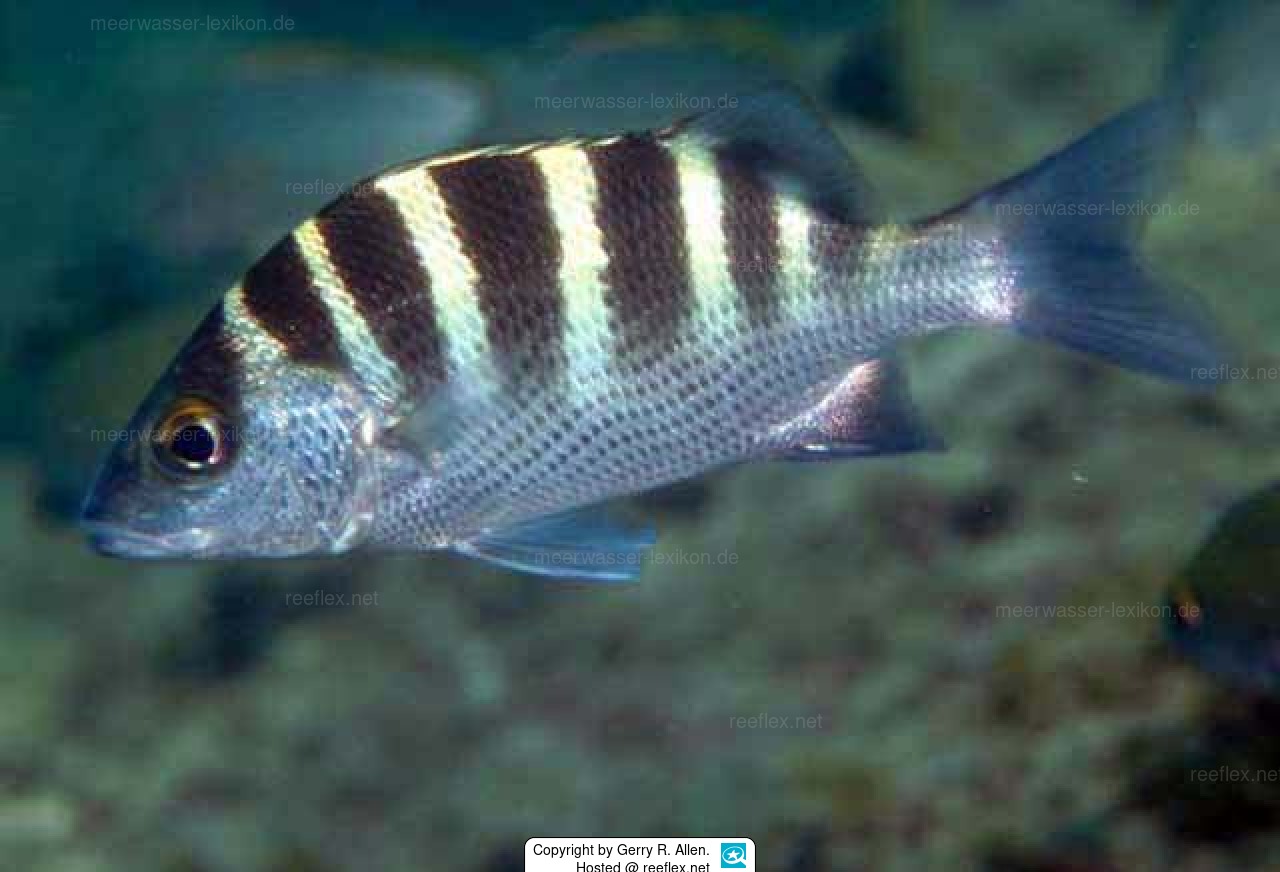Info
The six-striped grunt Haemulon sexfasciatum can also be conveniently observed by swimmers and snorkelers as it likes to casually forage in shallow water zones over sandy, boulder and rocky bottoms.
Haemulon sexfasciatum has a silver-gray body with dark scales and a row of six light stripes on the back that fade toward the undersides.
The dorsum is relatively high and the snout is slightly pointed.
In some parts of the Gulf of California this grunt is very common, forming huge aggregations around rocky reefs during the day.
As night falls, however, they scatter to search specifically for food, regularly digging in the sand for hidden fish and cephalopods.
Not an animal for a home aquarium.
Synonym: Haemulon sexfasciatus Gill, 1862
Haemulon sexfasciatum has a silver-gray body with dark scales and a row of six light stripes on the back that fade toward the undersides.
The dorsum is relatively high and the snout is slightly pointed.
In some parts of the Gulf of California this grunt is very common, forming huge aggregations around rocky reefs during the day.
As night falls, however, they scatter to search specifically for food, regularly digging in the sand for hidden fish and cephalopods.
Not an animal for a home aquarium.
Synonym: Haemulon sexfasciatus Gill, 1862







 Dr. Gerald (Gerry) Robert Allen, Australien
Dr. Gerald (Gerry) Robert Allen, Australien























